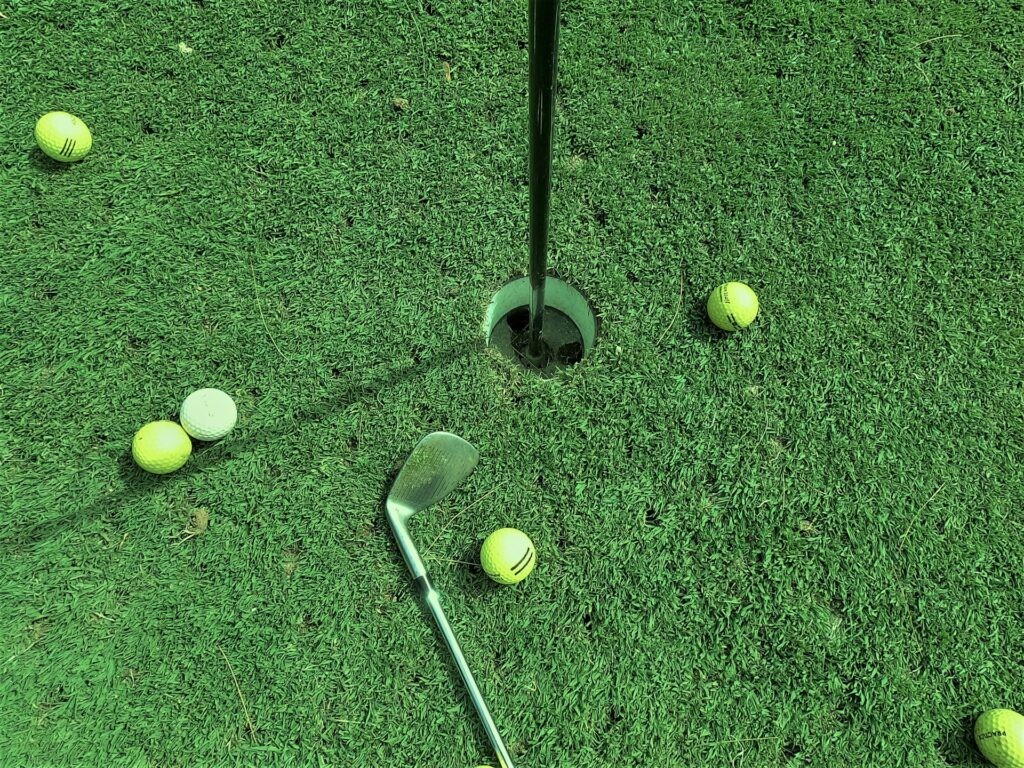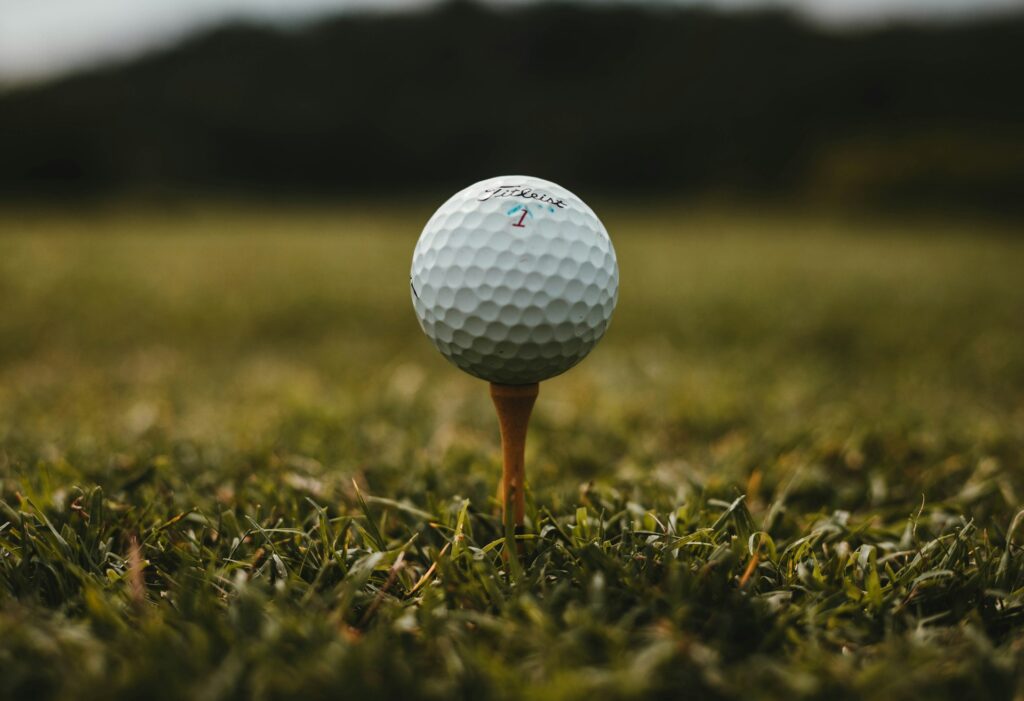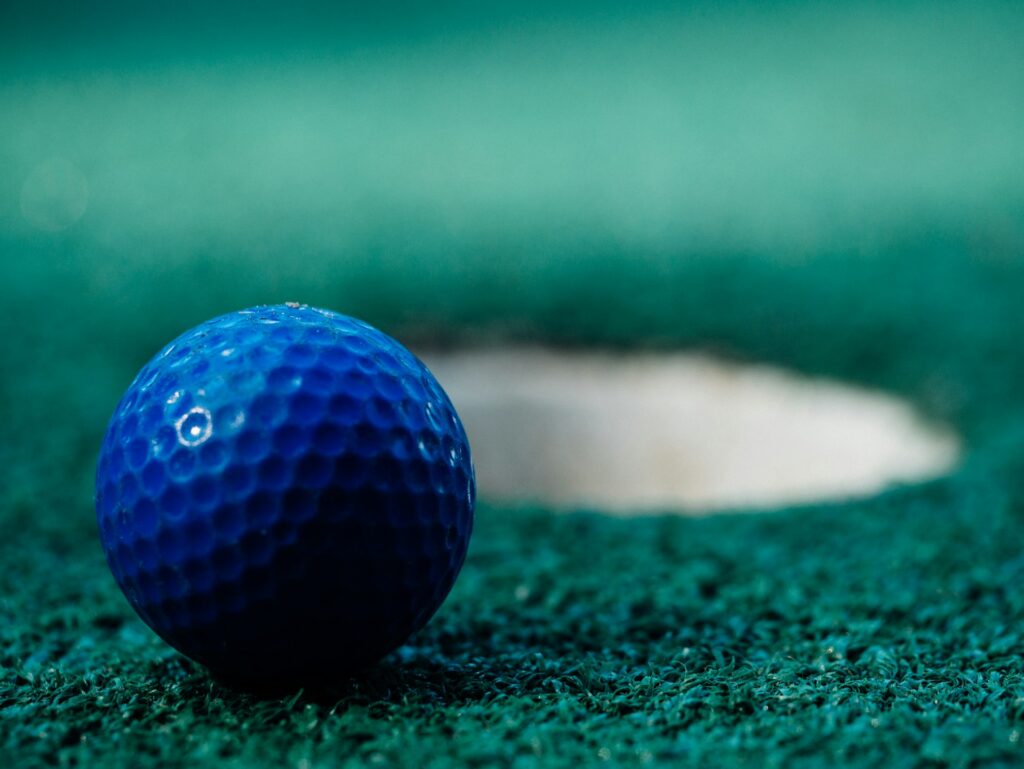For golfers of all skill levels, being able to clearly see the golf ball is crucial for accurate shot-making and overall enjoyment of the game. While the traditional white ball remains a popular choice, the advent of colored golf balls has opened up new possibilities for enhancing visibility on the course. From vibrant neon hues to soft pastels, the color of a golf ball can significantly impact its contrast against the surrounding environment, making it easier or more challenging to track in flight and locate after landing.
In this comprehensive guide, we’ll explore the science behind color visibility, examine the advantages and drawbacks of various ball colors, and provide insights from professional golfers on their preferred hues. Whether you’re a seasoned player seeking a competitive edge or a beginner looking to improve your game, understanding the nuances of ball color selection can be a game-changer for your overall golfing experience.

Why Does the Color of a Golf Ball Matter?
The color of a golf ball plays a crucial role in visibility, which is an essential factor for any golfer, whether a beginner or a professional. As the game of golf is played outdoors on expansive courses with varying terrain and lighting conditions, being able to easily spot the ball can significantly impact a player’s performance and overall enjoyment of the game.
Visibility becomes particularly important when the ball lands in areas with tall grass, dense foliage, or shadows cast by trees or terrain features. In such situations, a ball that blends in with its surroundings can be challenging to locate, leading to frustration, time wasted searching, and potential penalties for lost balls. Conversely, a ball that stands out against the background is easier to track in flight and locate after landing, allowing for smoother gameplay and better shot selection.
Furthermore, visibility is not just a concern for finding the ball after each shot; it also plays a role in tracking the ball’s trajectory during the swing. A ball that is easily visible against the sky or the course’s backdrop can provide valuable feedback on the shot’s direction and trajectory, enabling players to make necessary adjustments for their next swing. This visual feedback is especially crucial for golfers working on improving their swing mechanics or those playing in unfamiliar courses or weather conditions.
In addition to enhancing gameplay, the color of a golf ball can also contribute to a player’s confidence and mental focus. When a golfer can easily spot their ball, they can concentrate on their swing and shot execution without the distraction of constantly searching for the ball. This increased focus and clarity can lead to better overall performance and a more enjoyable golfing experience.
How Do Different Colors Affect Visibility?
Different colors can significantly impact the visibility of a golf ball, and understanding the factors that influence this visibility is crucial for choosing the right ball color. The visibility of a golf ball is largely determined by its contrast against the background and the lighting conditions on the course.
One of the most critical factors affecting visibility is the contrast between the ball’s color and the surrounding environment. Colors that stand out against the predominant hues of the course, such as greens, browns, and blues, tend to be more visible. For instance, on a typical course with lush green fairways and rough, a bright white or yellow ball will provide a stark contrast, making it easier to spot.
However, the optimal color choice can vary depending on the specific course conditions and the time of day. In early morning or late afternoon when the sun is lower on the horizon, certain colors may become more or less visible due to the changing light angles and shadows. For example, a white ball may appear washed out or blend in with bright sunlight, while a brighter color like neon yellow or orange could provide better visibility during these times.
Additionally, different colors have varying levels of brightness and reflectivity, which can impact their visibility under different lighting conditions. Brighter colors, such as fluorescent shades, tend to be more visible in low-light conditions or when playing on overcast days. Conversely, darker colors like black or navy blue may be more challenging to spot, particularly in shaded areas or during twilight hours.
It’s also worth noting that personal preferences and visual perception can play a role in color choice. Some golfers may find certain colors easier to track against the sky or in their peripheral vision, while others may prefer colors that provide a clearer contrast against the fairway or rough.
Ultimately, understanding how different colors interact with the course environment and lighting conditions is essential for choosing the ball color that will provide optimal visibility and enhance your overall golfing experience.

Which Colors Are the Most Visible on the Course?
While personal preferences play a role, certain colors have proven to be more visible on golf courses than others. The most visible colors tend to be those that provide a stark contrast against the predominant hues found on the course, such as greens, browns, and blues.
One of the most popular and highly visible colors for golf balls is bright white. White balls stand out exceptionally well against the green fairways, rough, and putting surfaces, making them easy to track in flight and locate after landing. Additionally, white balls reflect light effectively, enhancing their visibility in various lighting conditions.
Fluorescent and neon shades, particularly yellow and orange, are also among the most visible colors on the course. These vivid hues create a striking contrast against the natural surroundings, making them easier to spot even in low-light conditions or when positioned against darker backgrounds like shadows or thick rough.
Bright red golf balls have also gained popularity due to their high visibility. The vibrant red color not only contrasts well with the greens and browns of the course but also tends to be more visible in peripheral vision, which can be helpful for tracking the ball’s trajectory during the swing.
While less common, certain shades of pink or purple can also provide good visibility, especially on courses with more varied color palettes or during specific seasons when the course’s natural hues change.
It’s important to note that the visibility of different colors can be influenced by factors such as weather conditions, time of day, and the specific course layout. For example, a bright yellow ball may be more visible on a sunny day, while a fluorescent orange ball could be more effective in overcast or low-light conditions.
Ultimately, while personal preferences play a role, golfers should consider the predominant colors of the course they play on most frequently and choose a ball color that provides the best contrast and visibility in those specific conditions.
What About Low-Light Conditions?
Low-light conditions, such as early morning, late evening, or overcast days, can significantly impact the visibility of a golf ball on the course. In these situations, choosing the right ball color becomes even more crucial to ensure optimal visibility and prevent losing sight of the ball during play.
During low-light conditions, colors that are highly reflective or fluorescent tend to perform better than traditional white or more muted hues. Fluorescent yellow, orange, and pink golf balls are often favored for their ability to stand out against the subdued tones of the course when natural light is limited.
The science behind the visibility of fluorescent colors in low-light conditions lies in their ability to absorb and re-emit light at a longer wavelength. This process, known as fluorescence, makes these colors appear brighter and more vibrant, even when the available light is diminished.
Another excellent option for low-light play is the use of high-visibility yellow or neon yellow golf balls. These bright, almost glowing shades are designed to reflect as much available light as possible, making them easier to track and locate even in dimly lit surroundings.
It’s worth noting that personal eyesight and perception can also play a role in determining the most visible ball color in low-light conditions. Some individuals may have better sensitivity to certain colors or contrasts, making their choices slightly different from the general recommendations.
Regardless of individual preferences, it’s advisable for golfers who frequently play during early morning, late evening, or overcast conditions to experiment with various high-visibility ball colors. This can help them identify the hue that provides the best contrast and visibility against the specific course conditions they typically encounter during low-light play.

Do Professional Golfers Prefer Certain Ball Colors?
Professional golfers, who rely heavily on precision and performance, often have distinct preferences when it comes to the color of their golf balls. While personal preference plays a role, many pros consider factors such as visibility, consistency, and brand sponsorships when choosing their ball color.
One of the most popular choices among professional golfers is the traditional white golf ball. The crisp white hue provides excellent visibility against the green fairways and rough, allowing pros to easily track the ball’s flight and quickly locate it after landing. Additionally, white balls tend to offer a clean, consistent look that can be appealing to some players.
However, an increasing number of professionals have started experimenting with high-visibility colored balls, particularly in shades of yellow, orange, and pink. These vibrant hues offer enhanced visibility, which can be advantageous during certain course conditions or television broadcasts. For example, a bright yellow ball may be easier to spot against the backdrop of a lush green course, especially during overcast or low-light conditions.
Interestingly, some professional golfers have reported that certain colored balls can provide a visual advantage when it comes to tracking the ball’s spin or trajectory. For instance, a few players have claimed that yellow or orange balls appear to have a more pronounced visual arc during flight, potentially aiding in their ability to shape shots or gauge distance more effectively.
Brand sponsorships and partnerships can also influence a professional golfer’s choice of ball color. Many golf equipment manufacturers offer their flagship models in a variety of color options, and some pros may choose to play with a specific hue to align with their sponsor’s branding or marketing initiatives.
Ultimately, while visibility and personal preference are significant factors, professional golfers often carefully consider the potential advantages and disadvantages of different ball colors before making their selection. Their choices are typically driven by a combination of optimal performance, visual aids, and adherence to brand or sponsor guidelines.
Are There Any Other Factors to Consider?
While the color of a golf ball is a crucial factor in determining its visibility on the course, there are several other elements that golfers should consider when selecting the right ball for their game. These additional factors can further enhance visibility, performance, and overall playing experience.
One important consideration is the ball’s construction and material composition. Certain ball materials, such as premium urethane or ionomer covers, can provide a higher level of durability and resistance to discoloration or fading over time. This can be particularly beneficial for golfers who frequently play in sunny or harsh weather conditions, as a well-maintained ball color can contribute to better visibility throughout its lifespan.
Another factor to consider is the ball’s surface texture and dimple pattern. Some golf ball manufacturers offer specialized dimple designs or coatings that can improve visibility by enhancing the ball’s ability to catch and reflect light. These specialized surface treatments can be especially helpful in low-light conditions or when playing against the sun’s glare.
Personal playing habits and course conditions should also be taken into account. For example, golfers who tend to slice or hook their shots may benefit from a ball color that provides better visibility from various angles, allowing them to more easily track the ball’s trajectory and make necessary adjustments.
Additionally, the specific course layout, terrain, and vegetation can influence the optimal ball color choice. Courses with dense tree coverage or significant elevation changes may require a different color selection than those with wide-open fairways and minimal obstacles.
Finally, golfers should consider the potential impact of ball color on their mental game and confidence. Some players may find that a particular color resonates with them more positively, boosting their focus and self-assurance on the course. While this factor is highly subjective, it can contribute to an overall more enjoyable and successful playing experience.
By carefully evaluating factors such as ball construction, surface texture, personal playing style, course conditions, and mental aspects, golfers can make an informed decision that not only enhances visibility but also optimizes performance and overall satisfaction with their game.
Enjoyed this guide of what is a scramble in golf? Then be sure to check out our other golf guides.